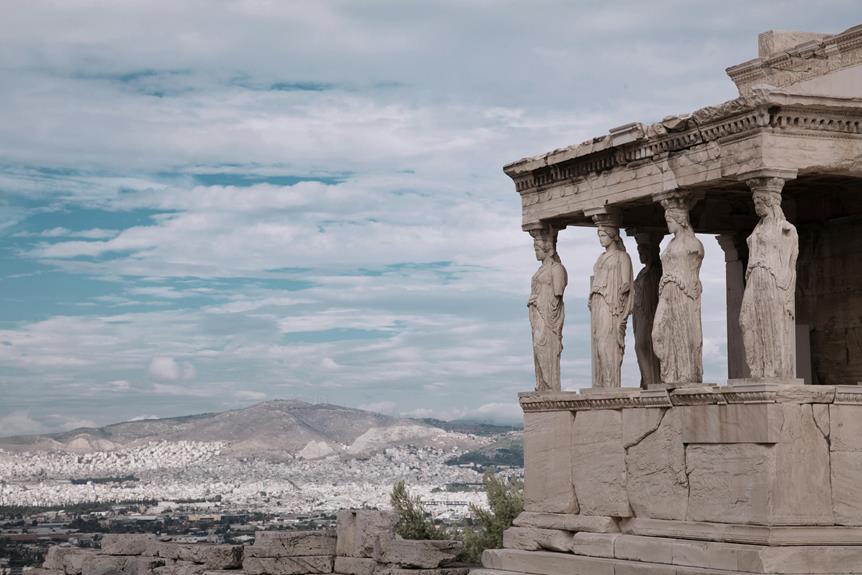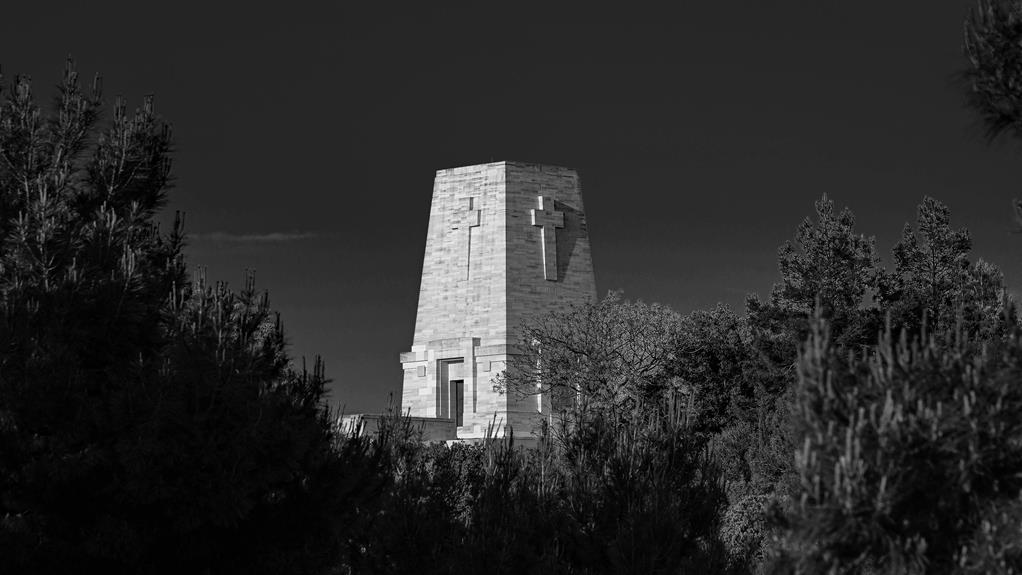The Tangshan Earthquake Memorial in China stands as a solemn tribute to the catastrophic events of 1976, a moment in history that forever altered the landscape of the city and the lives of its inhabitants. This memorial not only commemorates the lives lost but also serves as a powerful reminder of the resilience of the human spirit in the face of adversity. Through its various components, the memorial offers a profound insight into the impact of the earthquake and the ongoing efforts to honor its victims and educate future generations about the importance of disaster preparedness and community solidarity.
Key Takeaways
- Commemorates devastating 1976 earthquake in Tangshan.
- Represents resilience and strength of human spirit.
- Modern architectural design symbolizes rebuilding and hope.
- Houses interactive exhibits and artifacts from the disaster.
- Serves as a reminder of the destructive power of natural disasters.
Tangshan Earthquake Memorial Overview
The Tangshan Earthquake Memorial stands as a solemn tribute to the devastating earthquake that struck the city of Tangshan in 1976. The earthquake, with a magnitude of 7.6, resulted in one of the deadliest natural disasters in modern history, claiming the lives of approximately 240,000 people and leaving the city in ruins. The aftermath of the earthquake was catastrophic, with buildings reduced to rubble, infrastructure destroyed, and families torn apart. The Tangshan Earthquake Memorial serves as a poignant reminder of the resilience and strength of the human spirit in the face of such tragedy.
The significance of the memorial lies in its role as a place of remembrance, honoring the lives lost and the hardships endured by the survivors. It stands as a symbol of hope, healing, and the enduring spirit of the people of Tangshan. The memorial also serves as a stark warning against the destructive power of natural disasters and the importance of preparedness and resilience in the face of such events.
Visitors to the Tangshan Earthquake Memorial can gain a deeper understanding of the impact of the earthquake and pay their respects to the victims. Through exhibits, artifacts, and tributes, the memorial provides a thorough look at the events of 1976 and the long-lasting effects on the city and its inhabitants.
Historical Background of the Memorial
Situated in the heart of Tangshan, the Earthquake Memorial stands as a poignant reminder of the city's tumultuous past. The historical context surrounding the memorial is essential to understanding its cultural significance:
- Tangshan Earthquake: The memorial commemorates the devastating Tangshan earthquake of 1976, one of the deadliest earthquakes in recorded history. This catastrophic event, measuring 7.6 on the Richter scale, resulted in the loss of over 240,000 lives and left the city in ruins. The memorial serves as a tribute to those who lost their lives and as a symbol of the city's resilience in the face of adversity.
- Reconstruction Efforts: Following the earthquake, Tangshan underwent extensive reconstruction to rebuild the city from the rubble. The memorial not only honors the victims but also highlights the perseverance and unity of the Tangshan community in rebuilding their city. It stands as a confirmation to the strength and determination of the people to rise from the ashes and reconstruct their lives.
- Symbol of Hope: The Earthquake Memorial is not just a physical structure but a symbol of hope and renewal for the city. It represents a new beginning for Tangshan, a reminder of the past, and a beacon of resilience for future generations. The memorial's historical background underscores its cultural significance as a place of remembrance, reflection, and inspiration.
Architecture of the Memorial Site
Against the backdrop of Tangshan's historical significance, the architectural design of the Earthquake Memorial site embodies a profound symbol of resilience and remembrance. The structure of the memorial reflects a harmonious blend of architectural design, symbolism, landscape integration, and aesthetics that captivates visitors and pays homage to the past.
| Architectural Design | Symbolism | Landscape Integration | Aesthetics |
|---|---|---|---|
| The memorial features modern architectural elements that symbolize strength and rebuilding after devastation. | Various symbolic representations throughout the site honor the lives lost and the community's resilience in the face of tragedy. | The memorial seamlessly integrates with the surrounding landscape, offering a tranquil space for reflection and remembrance. | Aesthetically pleasing design elements create a serene atmosphere that encourages contemplation and respect for the history of Tangshan. |
The architectural design of the Tangshan Earthquake Memorial site serves as a symbol of the city's ability to rise from the rubble and rebuild itself after one of the deadliest earthquakes in history. The symbolism incorporated into the structure and surrounding area conveys a message of hope, resilience, and remembrance. The seamless integration of the memorial into the natural landscape and the attention to aesthetics provide visitors with a space that is not only informative but also emotionally moving, making it a fitting tribute to the past while offering solace for the future.
Commemorative Exhibits and Artifacts
Embodying the essence of remembrance and historical significance, the array of commemorative exhibits and artifacts at the Tangshan Earthquake Memorial site offers visitors a profound insight into the tragedy and resilience of the community.
Interactive Installations: The memorial site features interactive installations that allow visitors to engage with the history of the 1976 earthquake. These installations use multimedia elements such as videos, audio recordings, and touchscreens to provide a dynamic and immersive experience. Visitors can learn about the causes of the earthquake, the impact on the city of Tangshan, and the rebuilding efforts that followed.
Symbolic Sculptures: Throughout the memorial site, symbolic sculptures stand as poignant reminders of the devastation caused by the earthquake. These sculptures capture the pain and suffering of the victims, as well as the strength and unity of the survivors. They serve as powerful symbols of resilience and hope, paying tribute to those who lost their lives and honoring the spirit of the community.
Historical Artifacts: The Tangshan Earthquake Memorial houses a collection of historical artifacts recovered from the ruins of the city. These artifacts, including personal belongings, household items, and fragments of buildings, offer a tangible connection to the past. By preserving and displaying these artifacts, the memorial guarantees that the memory of the earthquake and its impact will endure for future generations.
Impact of the 1976 Earthquake
The aftermath of the 1976 Tangshan earthquake left a lasting impact on the city, reshaping its landscape and community in profound ways. The long-term effects of the earthquake were profound, with over 240,000 people losing their lives and countless others being injured. The physical devastation was immense, with buildings and infrastructure destroyed, leaving the city in ruins. However, amidst the destruction, a remarkable story of resilience emerged as the community rallied together to rebuild.
The process of community rebuilding was a challenging one, requiring immense effort and resources. The city had to be reconstructed from the ground up, with new infrastructure being put in place to replace what was lost. Homes, schools, hospitals, and businesses were all rebuilt, creating a new foundation for the city to grow from. The scars of the earthquake were visible for years to come, serving as a reminder of the city's resilience in the face of adversity.
Despite the tragedy and loss, the Tangshan earthquake also brought about a sense of unity and solidarity among the residents. The shared experience of survival and rebuilding created a strong bond within the community, fostering a spirit of resilience that continues to define the city to this day. The impact of the earthquake was profound, but the story of Tangshan is one of strength, perseverance, and the power of community in the face of disaster.
Stories of Survival and Resilience
Numerous accounts of survival and resilience emerged in the wake of the 1976 Tangshan earthquake, illustrating the unwavering human spirit amidst overwhelming adversity. The survivor stories paint a vivid picture of courage and determination in the face of unimaginable destruction. These tales of resilience highlight the strength of the human will to overcome even the most challenging events.
Here are three remarkable examples that showcase the indomitable spirit of the Tangshan earthquake survivors:
- The Miracle Baby: One of the most touching survivor stories involves a baby who was miraculously found alive under the rubble days after the earthquake. Despite the odds stacked against them, the infant's survival symbolized hope and resilience in the midst of despair.
- Neighbors Unite: In the aftermath of the disaster, neighbors came together to support each other, sharing resources and offering comfort. This sense of community resilience not only helped in immediate relief efforts but also laid the foundation for rebuilding and healing in the years to come.
- Rebuilding Lives: Many survivors faced the challenging task of rebuilding their lives from scratch. Through sheer determination and perseverance, they not only rebuilt their homes but also their shattered communities, demonstrating the power of resilience in overcoming adversity. These survivor stories serve as a proof to the human capacity to endure and thrive in the face of calamity.
Memorial's Role in Remembering Victims
In commemorating the victims of the 1976 Tangshan earthquake, the memorial plays a pivotal role in honoring their memory and preserving the legacy of the tragedy. The memorial serves as a solemn space where individuals can pay their respects to the thousands who lost their lives during the catastrophic event. By providing a physical location for remembrance, the memorial offers a tangible way for people to connect with the past and reflect on the impact of the earthquake on both a personal and societal level.
Furthermore, the memorial plays an essential role in the healing process of the survivors and the families of the victims. Through collective mourning and shared remembrance, individuals can find solace and comfort in knowing that their loved ones are not forgotten. The act of visiting the memorial can be cathartic, allowing visitors to process their grief and come to terms with the tragedy that befell their community.
Moreover, the memorial's role extends beyond individual healing to encompass collective healing as well. By acknowledging the past and honoring the victims, the memorial fosters a sense of unity and solidarity among those affected by the earthquake. It serves as a reminder of the resilience and strength of the community in the face of adversity, inspiring hope for the future and a commitment to never forget the lives that were lost.
Visiting Information and Hours
Visitors planning to explore the Tangshan Earthquake Memorial in China can find essential information regarding visiting hours and guidelines on the official website. The memorial is open to the public throughout the week, offering a poignant experience for those seeking to learn more about the devastating earthquake that struck Tangshan in 1976. Understanding the significance of this historical event is vital to appreciating the resilience and spirit of the Chinese people.
When planning your visit to the Tangshan Earthquake Memorial, consider the following:
- Opening Times: The memorial is open from 8:30 am to 5:00 pm every day, allowing visitors ample time to explore the exhibition halls, sculptures, and commemorative sites. Arriving earlier in the day can provide a more immersive experience, as the site tends to be less crowded in the mornings.
- Visitor Experience: Prepare for an emotionally impactful journey as you walk through the memorial grounds. The exhibits offer a detailed account of the earthquake's impact on Tangshan and its residents, providing a somber yet enlightening perspective on this tragic event.
- Guided Tours: To enhance your understanding of the memorial's significance, consider joining a guided tour. Knowledgeable guides can offer insights into the historical context of the earthquake, enriching your visit with additional information and personal stories.
Educational Programs and Outreach
Exploring the Tangshan Earthquake Memorial in China reveals a significant opportunity to engage with its educational programs and outreach initiatives, enriching visitors with a deeper understanding of the seismic event's historical significance. The memorial offers a range of educational programs geared towards community engagement, focusing on disaster prevention and preparedness. Through guided tours, interactive exhibits, and educational workshops, visitors are not only able to learn about the devastating impact of the 1976 earthquake but also gain valuable insights into the importance of disaster resilience.
The educational programs at the Tangshan Earthquake Memorial are designed to raise awareness about the causes and effects of earthquakes, emphasizing the need for proactive measures to mitigate risks and enhance community safety. By incorporating multimedia presentations, real-life accounts, and historical artifacts, the memorial creates a comprehensive learning experience that resonates with visitors of all ages.
Moreover, the outreach initiatives organized by the memorial extend beyond its physical location, reaching out to schools, universities, and local communities to promote disaster prevention strategies. By fostering partnerships with educational institutions and government agencies, the memorial plays a significant role in advocating for disaster preparedness at a broader societal level. Overall, the educational programs and outreach efforts at the Tangshan Earthquake Memorial serve as a powerful tool for raising awareness, instilling resilience, and fostering a culture of safety within the community.
Implications for Disaster Preparedness
By delving into the implications for disaster preparedness at the Tangshan Earthquake Memorial in China, a nuanced understanding of proactive measures and community resilience can be cultivated. The memorial serves as a poignant reminder of the catastrophic 1976 earthquake, prompting reflections on disaster response and emergency planning. Here are three key takeaways regarding disaster preparedness from the Tangshan Earthquake Memorial:
- Community Education: The memorial plays a vital role in educating visitors about the importance of disaster preparedness. Through exhibits, simulations, and guided tours, individuals learn about past mistakes and successes in managing disasters. This educational aspect fosters a culture of awareness and readiness within the community, empowering people to take proactive measures in the face of potential calamities.
- Government Coordination: The memorial underscores the significance of government involvement in disaster management. By showcasing how local authorities responded to the Tangshan earthquake and its aftermath, visitors gain insights into the complexities of coordinating emergency efforts. This insight highlights the necessity of robust emergency planning at all levels of governance to mitigate the impact of disasters effectively.
- Resilience Building: The stories of survival and rebuilding showcased at the memorial inspire resilience among visitors. Understanding how the Tangshan community rallied together to overcome adversity encourages individuals to strengthen their own resilience capacities. This emphasis on resilience building underscores the importance of fostering solidarity and preparedness within communities to enhance overall disaster resilience.
Frequently Asked Questions
Are There Any Ghost Stories Associated With the Tangshan Earthquake Memorial?
Supernatural sightings and haunted legends often captivate individuals seeking the mysterious. Stories abound worldwide, with each locale offering unique tales of the paranormal. Ghostly encounters and eerie experiences associated with certain landmarks can fuel fascination and intrigue.
These narratives, whether rooted in folklore or personal accounts, add layers of complexity to historical sites, inviting exploration beyond the tangible. Delving into the domain of supernatural phenomena can reveal a rich tapestry of human imagination and belief.
How Has the Local Community Been Involved in Maintaining the Memorial?
Community involvement in maintaining memorials is essential for their preservation. Local residents often play a significant role in these efforts, organizing events, fundraisers, and volunteer programs. Their deep connection to the site fosters a sense of ownership and responsibility, ensuring its upkeep for future generations.
Can Visitors Participate in Any Interactive Experiences at the Memorial?
Visitors at the memorial can engage in interactive tours and access hands-on exhibits. These experiences offer a deeper understanding of the historical significance of the site and the events that transpired.
Through interactive elements, visitors can actively participate in their learning process, fostering a more immersive and engaging visit. Such opportunities not only educate but also provide visitors with a more personal connection to the memorial and its stories.
Is There a Specific Time of Year When the Memorial Holds Special Events?
Annual commemorations at the memorial are significant events that attract visitors. Special exhibitions are typically curated during these times, providing a deeper insight into the historical significance of the site.
These events often coincide with key dates related to the earthquake, drawing attention to the impact of the disaster and honoring the memory of those affected. Planning a visit during these times can offer a more immersive experience for visitors seeking to engage with the memorial's history.
Are There Any Plans for Expanding the Memorial in the Future?
In the domain of architectural evolution, the conceptualization of future expansion is a pivotal juncture for any memorial's legacy.
The strategic blueprint for the Tangshan Earthquake Memorial entails a vision that extends beyond its current boundaries. The interplay of space, design elements, and historical narrative will shape the forthcoming architectural endeavors.
As the memorial navigates the domain of expansion, meticulous planning and homage to the past will converge to redefine its physical and symbolic presence.
Conclusion
To sum up, the Tangshan Earthquake Memorial stands as a poignant reminder of the catastrophic event in 1976, serving as a beacon of hope and resilience. Through its architectural design, exhibits, and survivor stories, the memorial educates visitors about the earthquake's impact and the importance of disaster preparedness.
Ironically, the tragic loss of lives serves as a powerful lesson in the fragility of human existence and the need for communal strength in the face of adversity.


